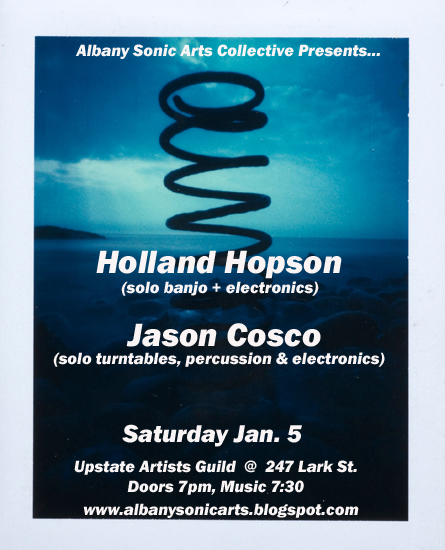Josh Ronsen has launched the Austinnitus Audio Series to showcase artists featured on the Austinnitus list. There are already plenty of good recordings to check out and Josh continues to add more. I’ve especially enjoy hearing documentation of some one-off performances, otherwise lost to the ether, such as A.I.N.T. #4. A.I.N.T. stands for Austinnitus Improv NighT, as good an excuse as any for Josh to create ad-hoc ensembles and let them loose on the world. The fourth (and final?) of this short-lived series featured Sharon Crutcher (vocals), David DeMaris (keyboards, trumpet), Holland Hopson (saxophone, banjo, electronics), Genevieve Walsh (flute), Brandon Young (vocals).
[audio:http://ronsen.org/austinnitus/audio/aint4-1.mp3]
Part 1
[audio:http://ronsen.org/austinnitus/audio/aint4-2.mp3]
Part 2
[audio:http://ronsen.org/austinnitus/audio/aint4-3.mp3]
Part 3
[audio:http://ronsen.org/austinnitus/audio/aint4-4.mp3]
Part 4
[audio:http://ronsen.org/austinnitus/audio/aint4-5.mp3]
Part 5

